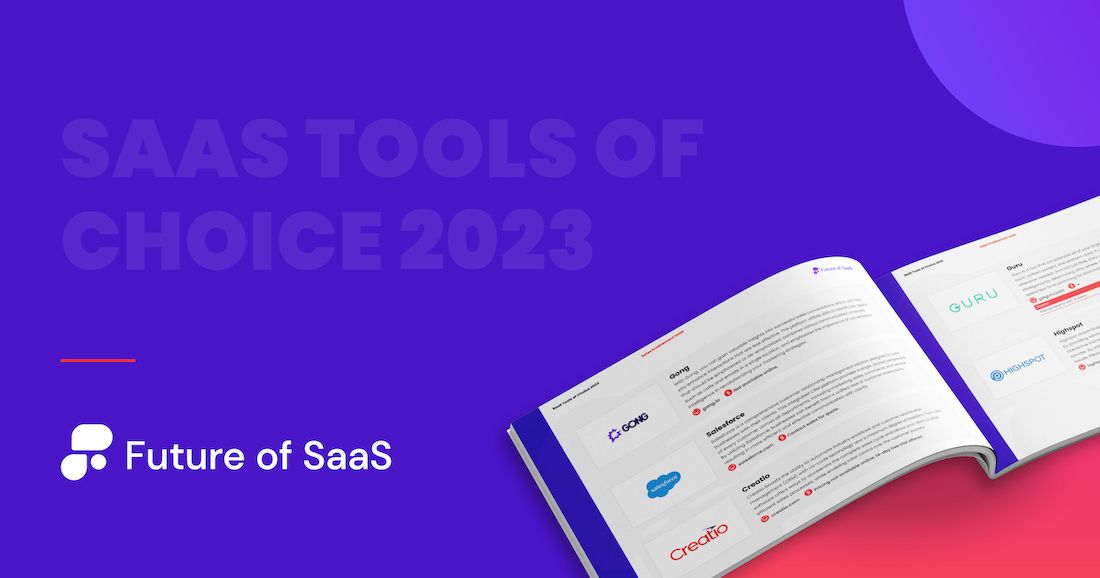You’ve heard the news: The market is more crowded than ever. And with that, the competition is fiercer. The result? SaaS companies have to be more methodical in order to hit their growth targets.
Analytics are important for any company, but especially for SaaS organizations. You’re giving customers the gift of convenience with a pay as you go model, meaning they can essentially churn at any time and put a serious dent in your revenue.
Of equal importance is the fact that not all users will necessarily provide real value, especially if, like many SaaS companies, you’re providing a basic freemium package, you might find the cost of acquiring users is resulting in a loss.
In this article, we’ll dig more into the material benefits, how you can implement an analytics strategy, and explore some of the common pitfalls that SaaS startups make.
Let’s start with some basic SaaS analytics 101.
What is SaaS Data analytics?
Simply put: SaaS data analytics refers to the process by which you collect, measure and utilize key data on your business performance.
This encompasses quantitative and qualitative information: revenue increasing or decreasing yearly and monthly, businesses expenses, projected vs actual growth, customer metrics, customer satisfaction and how customers are using your product or service.
As you can see, SaaS data analytics are holistic, there isn’t an aspect of your business it doesn’t touch, and there’s no department you shouldn’t be monitoring.

Why you should use SaaS data analytics
SaaS data analytics provides SaaS companies with a whole host of benefits, whether it’s measuring current performance, forecasting future revenue, and measuring the overall value of your product for customers.
Additionally, it can reveal the efficacy of your pricing strategy. Are you charging too much, or are you undervaluing your product? It can also give you key insights into your overall business spend. Are you distributing your funds effectively, or are you overspending on areas that aren’t bringing in much value?
Now let’s get into the nitty gritty. What are the specific areas that an effective analytics strategy has the potential to impact?
Enhance the implementation of data-informed choices within your company
If there’s one thing you don’t want as an effective SaaS company, it’s to be frantically putting out fires at every turn. Yes, you want to be able to react to changing market trends, but you want to see these changes happening in advance so you can put plans in place to pivot.
By implementing effective data-driven decision making, you can see new developments as they emerge and ensure that you’re planning for the future. You don’t want to be making key decisions at crisis point. Look at the bigger picture of how things are shifting, so that you can stay ahead of the curve.
Optimizing product performance
You’ll often hear SaaS leaders talk about the ‘stickiness’ of their product. This is another way of saying: The main goal of any SaaS company is to provide users with long term value.
SaaS data analytics can enable you to pinpoint the exact value moment in the onboarding process, similarly it can reveal the point where users typically fall through the cracks.
Use them to pinpoint which features are being underused either because customers aren’t finding them useful or because you aren’t showcasing them. Then you can trim the fat of your product, maximizing those features that customers find most useful and optimizing those that require improvement.
Customer acquisition and retention
The SaaS revolution has put a lot of power in the hands of the customer. If a customer doesn’t feel seen or understood, there’s nothing to stop them from finding a solution to fit their needs elsewhere.
You can utilize SaaS data analytics to form an accurate profile of your customer segments, then you can optimize and adapt your product accordingly and restructure your marketing campaigns so that they resonate with your core audience.

Some SaaS companies are so focused on growth they neglect to look closely at customer retention. The customers you’re retaining are those bringing you long term value, as they become ringing endorsements for the long term value of your product.
Once you have your audience nailed down, prepare to redistribute your budget to go after them along the right channels. These metrics are the key to understanding the appeal of your product and establishing your brand identity on the global stage. This data should be used to inform the whole customer journey.
Key metrics to track as part of your data analytics strategy
Monthly recurring revenue
Monthly recurring revenue (MRR) is like the dependable beat in your business's rhythm, representing the steady flow of revenue from your services month after month.
It's the predictable income that keeps your business growing, coming from those loyal customers who keep coming back for more of what you've got to offer. MRR gives you the lowdown on the stability and growth of your revenue streams, painting an accurate picture of your business's financial health over time.
Annual recurring revenue (ARR)
Annual Recurring Revenue (ARR) is the sum of predictable revenue that your business expects to rake in from subscription-based products or services over the course of a year.
It's like the grand total of all those subscription fees, contracts, or service agreements that keep rolling in, giving your business a solid foundation to build upon. ARR provides a clear snapshot of your business's yearly revenue potential, offering insight into its long-term financial stability and growth trajectory.
Customer acquisition cost (CAC)
Customer acquisition cost (CAC) is the amount of money a business spends on acquiring a new customer. It encompasses all the expenses related to marketing, advertising, sales, and other efforts aimed at attracting and converting potential customers into paying ones.
Calculating CAC involves dividing the total cost of acquiring customers by the number of customers acquired during a specific period. This metric is crucial for businesses to understand how efficiently they are investing their resources in acquiring new customers and to evaluate the effectiveness of their marketing and sales strategies.

CAC is an absolutely pivotal metric for SaaS companies, as users don’t necessarily equate to revenue, especially if most of your users are on a freemium offering. A pivotal goal of any SaaS company should be to try to get as much as much value as they possibly can out of their existing customers, rather than focusing entirely on acquisition.
Customer lifetime value
This will show you how much value you’re getting out of customers over the course of their time with you. If your customer lifetime value is lower than your CAC, you have a pretty significant problem, and you should look into how you can direct users to become more engaged with your platform.
The more indispensable your product becomes to their day-to-day lives, the more likely they are to be receptive to upselling, exploring additional features and bringing in additional value by endorsing your product to prospective customers.
Customer churn rate
Simply put, the number of customers saying goodbye to your product. SaaS companies need to keep a close eye on this at all times. Is there a pattern in the customers who are churning? Are they coming from a particular industry, demographic, and what stage of the customer lifecycle are they at?
If most of your churn is coming from newer customers, for example, it may indicate that you need to sharpen up your onboarding flow. If they're coming from a specific region, it may be a sign of an economic downturn there. Whatever the reason, it’s important to determine which customers are churning and why. Then you can take steps that are laser-focused towards reducing churn.

Customer conversion rates
It seems like a no-brainer, but SaaS companies need to grow, and they can only grow by increasing the number of customers signing up to their product. A poor conversion rate may indicate you need to step up your marketing efforts.
Maybe you’ve got a really great product but the word simply isn’t getting out there. Or maybe you need to take a more vertical approach to customer acquisition.
It can be tempting for SaaS companies to spread the conversion net as wide as possible, but this can be a mistake if your product targets a highly technical or niche market. It’s possible that you may overspend on ads where your customers simply don’t go, when you could be putting more energy into less costly organic channels.

Some companies take a thought leadership strategy, for example, publishing whitepapers and reports, sharing them in forums where they’re likely to find their ideal customer profile. A crucial step in the conversion funnel is trust and rapport building.
By establishing your brand as an authority in the industry, you can successfully move prospects to the awareness stage of the funnel, bringing them one step closer to the all-important conversion stage.
Customer satisfaction score
CSAT, short for Customer Satisfaction Score, serves as a prevalent metric in evaluating customer experience, gauging the level of satisfaction customers derive from your company's offerings. It's typically determined through customer feedback surveys and expressed as a percentage, spanning from 0% to 100%.
This is the more qualitative side of your metric strategy. It can give you a more in-depth understanding of what value customers aren’t finding in your product or service.

While quantitative metrics will give you an indication of what’s going wrong they can’t always tell you what might be missing in your product. You may find that customers can suggest feature updates or optimizations you hadn’t even thought about.
5 steps to master SaaS data analytics
So, you've heard all about the benefits, but here at Future of SaaS, we're all about actionable solutions. Let's dive into the practical steps you can take to leverage your analytics for maximum growth.
Establish concise objectives and Key Performance Indicators (KPIs)
So we all want to grow, that’s a given. But no two SaaS companies are the same, so it’s important that, from the very start of your journey, you have clear goals to aspire to.
The more specific you are with your goal setting, the more specific you can get in the solutions you formulate to take key steps and overcome challenges along the way. It’s important to have alignment across all departments within your org, but this is very difficult to do if you don’t have very firmly established objectives that everyone understands.
Integrate and centralize data
You need to ensure you identify the key data sources, extracting and monitoring that source consistently. There are various software solutions that, once implemented, allow you to extract that data as and when it arrives. You need to make monitoring data points a day to day task, but it only works if you have mechanisms in place to do the heavy lifting in data collection.
Essential data needs to be centralized so that you can see the overall picture of how you're progressing and draw conclusions on how separate metrics are impacting each other. Your senior management needs to make sure their decisions are data-driven, but they can only do this if they have access to pivotal data.
Choose the right SaaS analytics tools
Picking the perfect data analytics tools is like choosing the right gear for a road trip—it's crucial for navigating your data landscape smoothly and reaching your destination with style.
Think about things like user-friendliness, scalability (so you can grow without hitting any speed bumps), how well it plays with your other tools, and what specific benefits it brings to the table.

And if you're in the SaaS game, data is your vital fuel—every part of your operation thrives on it. So, when you're selecting your tools, make sure they're tailor-made for your business, easy for everyone to use, and pack a punch in terms of insights.
Formulate actionable insights
The data alone helps, conclusions formed from the data is even better. The final and most important step is the action plans you form from these insights. The purpose of reporting on your metrics is that you and your team can put your heads together and establish a realistic plan to overcome problems and reach your larger goals.
Iterate and improve
It’s not just about tracking to see what’s going wrong, it’s also about seeing what you’re doing right. Take advantage of these successes and identify the practices that are leading to the positive outcome.
More importantly, make these processes an essential part of your daily operations and take steps to share the knowledge with your team. KPI meetings aren’t just about crunching numbers, highlighting failures and celebrating successes, they’re also an opportunity to educate the team on what you’ve learned.
Common pitfalls for SaaS companies
Analytics is a tricky science and there's no one-size-fits-all approach that works, but sometimes it could be helpful to learn not just from your own mistakes, but from the mistakes of others. Here are some of the most common misteps.
Faulty data
Robust, reliable systems must be in place to ensure your data is accurate. Equally important is sharing your data with the rest of the team, and more importantly, senior stakeholders.
They may notice inconsistencies and errors that haven't occurred to you. Take care to monitor the right sources of data. You might have all the data in the world, but if you’re looking in the wrong places, then it’s a lot of fruitless effort.
Bad communication
Data should be the concern of the whole organization, not just senior stakeholders and you need to make data reporting a permanent fixture in your company meetings.
Additionally, your team needs to understand exactly what the numbers mean and what strategies will need to be improved either to iterate or improve operations. Don’t allow your org to be split up into silos. Communication is key in order for everyone to be aligned behind data-driven decisions.
Data overload
An overabundance of data can lead to everyone losing sight of the bigger picture. Data becomes so numerous, it becomes just that – numbers on a screen. Suddenly no one’s thinking about how these numbers impact business goals and the larger story they tell.
Failure to integrate data
Often, a SaaS business will have plenty of data but it’s spread across various platforms and inaccessible to some. By having mechanisms in place to draw all of this data together, you can understand what the wider impact of each metric is, and get a more holistic view of your company performance.
This requires a lot of effort initially, but successful implementation will create a culture where everyone understands how their work plays a part in the overall business.
Best practices for SaaS data analytics
And now for a roundup of all our key learnings:
- Set clear objectives and KPIs:
- Define where you want to go and how you'll get there.
- Integrate and centralize data:
- Gather all your essential information in one place, or it’s no use to anyone
- Choose the right analytics tools:
- Think of it like picking the perfect tool for a job—make sure it fits your needs and helps you make smart decisions.
- Turn Insights into action:
- Your numbers are indications, but only you and your team can utilize them to form an actionable plan.
- Avoid common pitfalls:
- Watch out for those pesky traps! Stay vigilant about data accuracy, keep communication flowing, and focus on what really matters to your business.
And above all else, a data-driven strategy is all about iteration and improvement. Use it to consolidate those practices that are driving you toward your growth goals and fine tune those strategies leading you on a road to nowhere.
Like what you see? Why not check out exclusive insights from some of the leading minds in SaaS right here.



